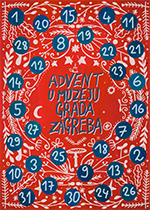The citizens of the free royal city at Gradec Hill had their own parish with the church of St. Mark in the mid-thirteenth century. The parish was first under the patronage of the bishop of Zagreb; in 1261, Queen Maria, the wife of King Bela IV of Hungary, placed it under the patronage of Gradec. The territory of the parish overlapped with the land that belonged to the royal city.
In the late 17th century, the parish comprised the town and the adjoining villages of Trnje, Horvati, Sveti Duh and some others.
The original church was a Romanesque basilica made of brick. In the last quarter of the 14th century, a three-aisle hall church was built, partly on the Romanesque foundations. Its columns were painted with Gothic frescoes. On the west side of the church, the municipality built the votive chapel of St. Fabian and St. Sebastian to protect the town from pestilence.
The south portal is figurally the richest and only Gothic portal in the continental part of Croatia. St. Mark’s was built and decorated by the masters of one of the numerous Czech workshops of builders and carvers.
A thorough restoration, undertaken in 1866 and completed in 1882, gave the church its present-day Neo-Gothic appearance and its striking roof of multicoloured tiles with the coats-of-arms of the city of Zagreb and of the three-partite Kingdom of Croatia.
Slavko Šterk

